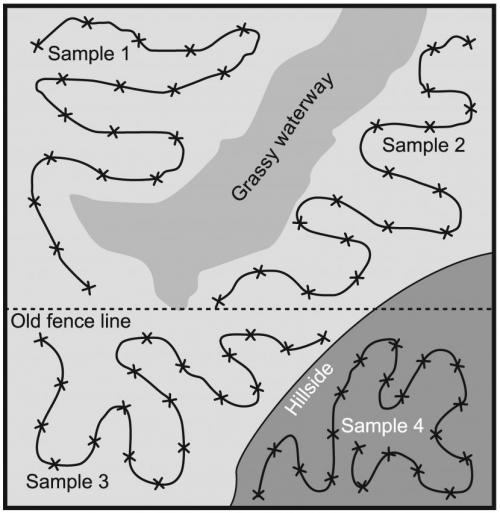By Dr. Greg Tylka
After harvest is completed and equipment is cleaned and winterized, there’s an activity that can be done in upcoming weeks that could pay large dividends relating to future soybean yields. That task is collecting soil samples to assess the situation with the soybean cyst nematode (SCN) in fields.
There are two possible benefits of collecting fall soil samples for SCN. Results of samples collected from fields where soybeans were grown in 2024 can help explain yields from the past season. Results of fall soil samples collected from fields of harvested corn in which soybeans will be grown in 2025 will reveal the extent to which SCN is present and what management options need to be considered moving forward.
Sampling for SCN is simple
- Use a soil probe, not a spade, and collect 15 to 20 soil cores from every 20 acres.
- Each soil core should be about 8 inches deep.
- The more soil cores collected and the smaller the sampling area, the more useful the results will be.
- Collect soil cores from agronomically similar areas or management zones in the field. See diagram below.
- Combine all soil cores representing a sampling area in a bucket, mix the soil well, and fill a soil sample bag or plastic bag that has been labeled with permanent marker on the outside of the bag.
- SCN soil samples need not be refrigerated; storing at room temperature is sufficient.
- Samples can be delivered or mailed to the ISU Plant and Insect Diagnostic Clinic, room 2445 Advanced Teaching and Research Building, 2213 Pammel Drive, Ames, IA 50011. The clinic can be contacted by calling 515-294-0581 or by emailing pidc@iastate.edu. More information is available online here and the sample submission form can be downloaded here.
- Many private soil-testing labs also can process samples for SCN.
Collecting multiple soil cores to comprise samples representing different management zones in a field:

Next steps for managing SCN when detected
Managing SCN requires an active, multi-prong approach. In short, farmers should grow SCN-resistant soybean varieties with PI 88788 and with Peking resistance in alternating soybean crops and in annual rotation with corn, which is an SCN nonhost. Also, there are nematode-protectant soybean seed treatments that may provide added yield protection. See soybeancyst.info and TheSCNCoalition.com for more information on SCN biology and management.
Source : iastate.edu